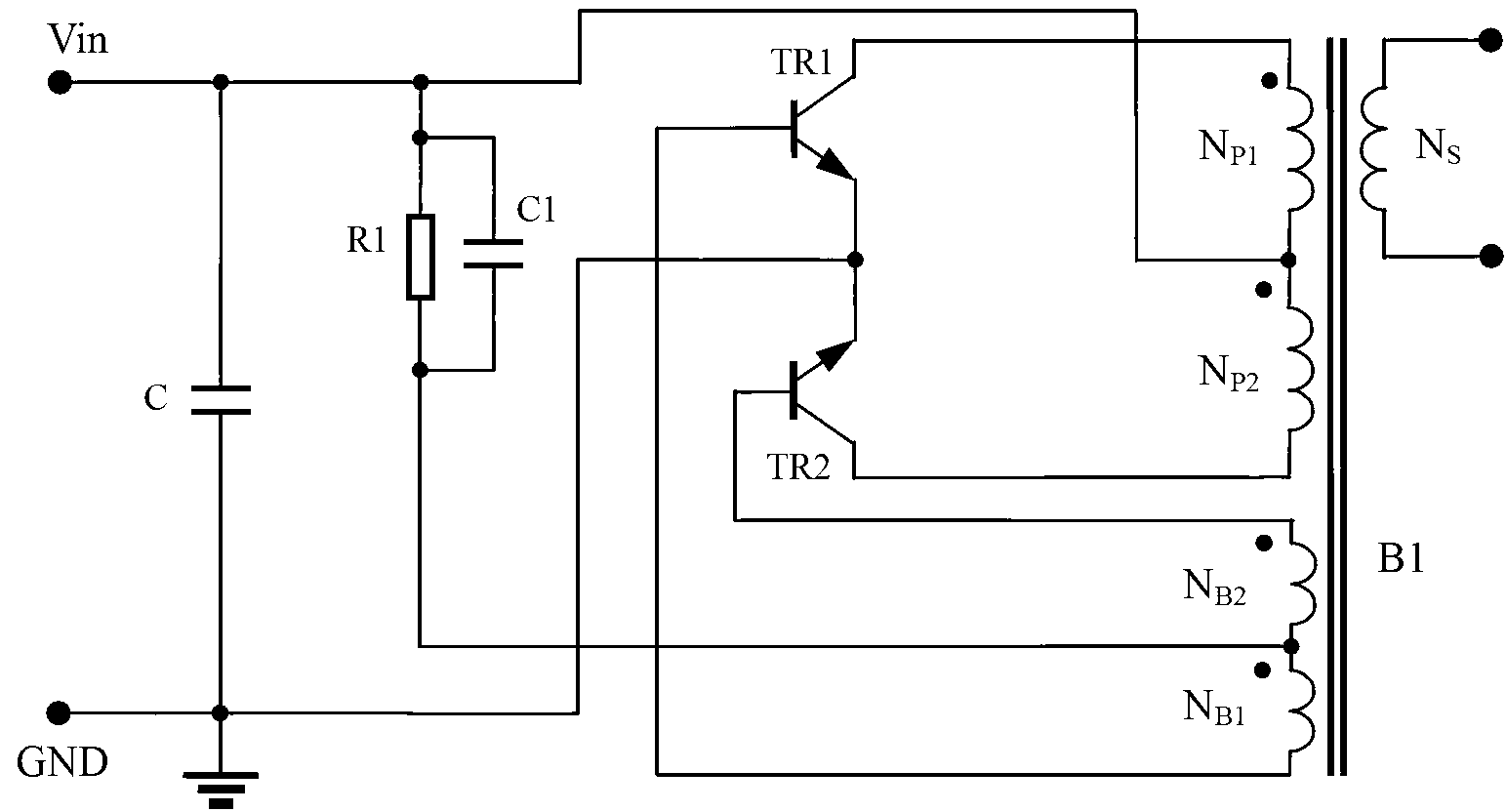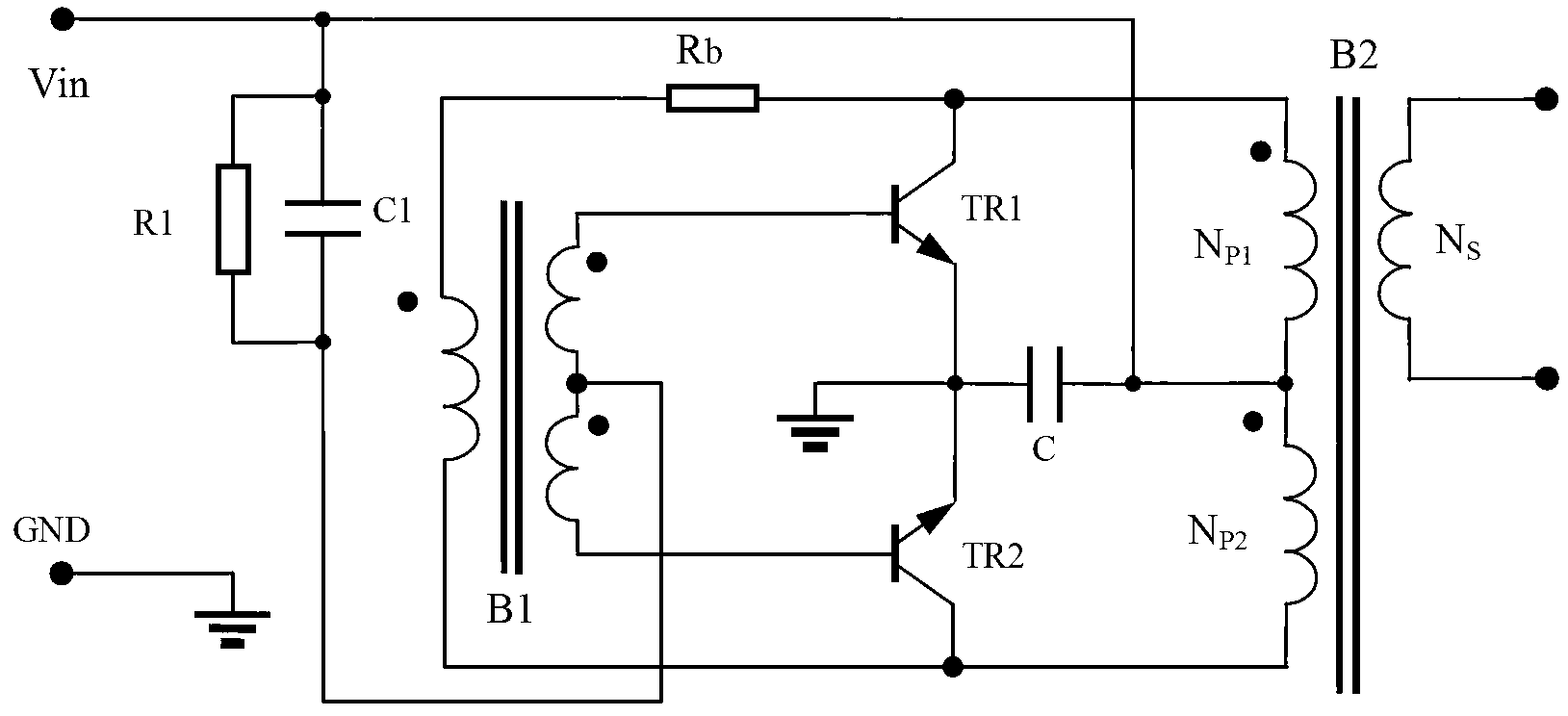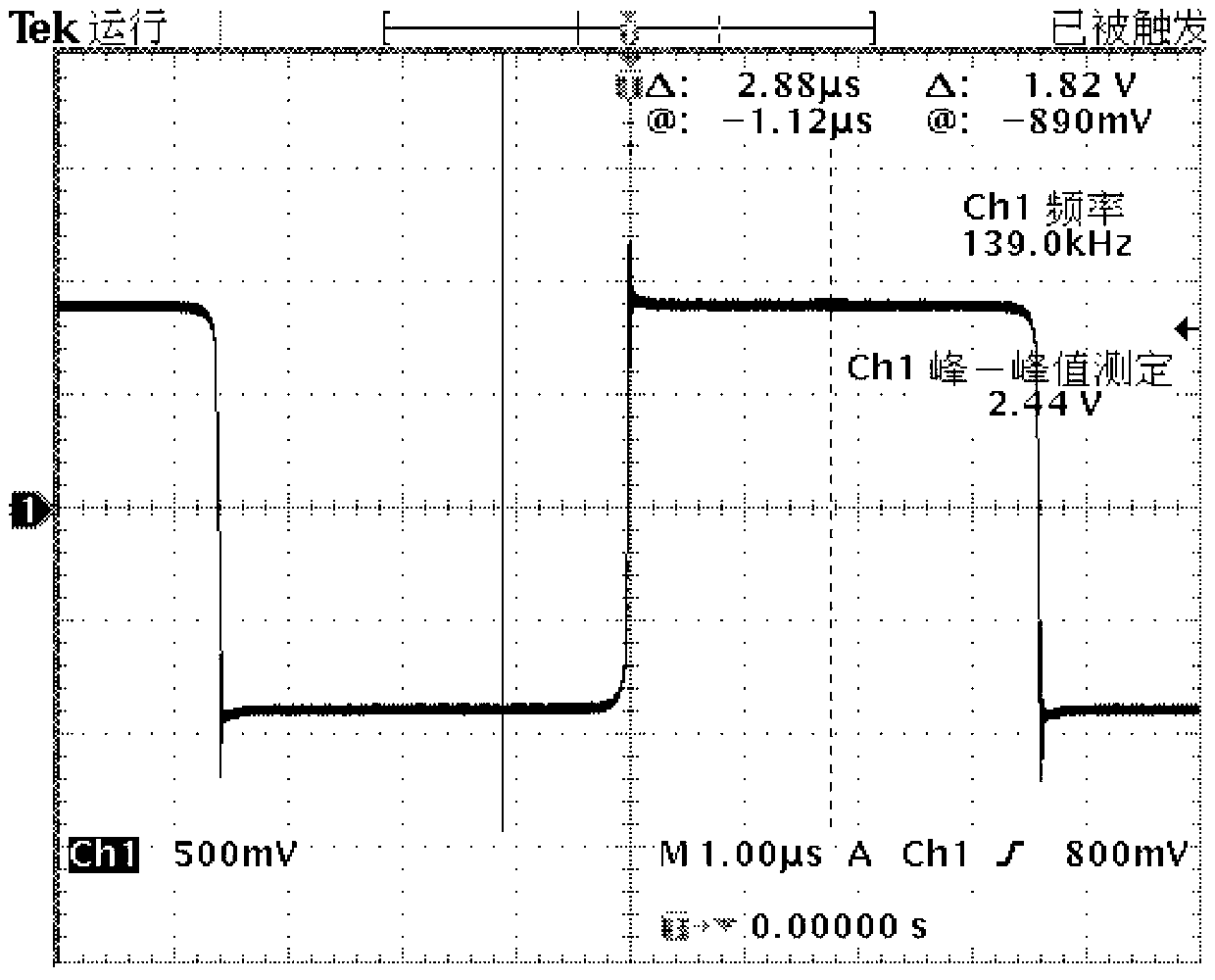Self-excited push-pull type converter
A self-excited push-pull, converter technology, applied in the direction of transformer/inductor cooling, transformer/inductor coil/winding/connection, magnetic liquid, etc., can solve problems such as difficult guarantee, difficult processing, and damaged line sequence, etc. Achieve the effects of improved efficiency, small size, and simple winding
- Summary
- Abstract
- Description
- Claims
- Application Information
AI Technical Summary
Problems solved by technology
Method used
Image
Examples
Embodiment 1
[0065] The schematic diagram of the self-excited push-pull converter of the first embodiment adopts figure 1 circuit, Figure 7 It is a schematic diagram of the combined magnetic core used in the transformer B1 of the first embodiment. The relatively common ER7.5 magnetic core is used. The magnetic material comes from TPW33 of Tiantong Holdings Co., Ltd. The appearance is as follows Figure 7 As shown, the six faces indicated by 22 are mirror faces.
[0066] Such as figure 1 As shown, the first embodiment is made into a 5V to 5V converter circuit with an output current of 250mA, the capacitor C is 2.2uF, the capacitor C1 is 0.33uF, the resistor R1 is 1.8KΩ, the transistors TR1 and TR2 are S8050 transistors, and the transformer B1 is all used Trace formation on the circuit board, winding N P1 and N P2 4 turns respectively, the feedback winding N B1 and N B2 were 1 turn, while the output winding N S It is 10 turns with a center tap, and connected to the full-wave rectific...
Embodiment 2
[0078] The schematic diagram of the self-excited push-pull converter of the second embodiment adopts figure 1 circuit, Figure 7 It is a schematic diagram of the combined magnetic core used in the transformer B1 of the second embodiment. The more common ER7.5 magnetic core is used, and the magnetic material is still the above-mentioned TPW33. The appearance is as follows Figure 7 As shown, the six faces indicated by 22 are mirror faces.
[0079] Such as figure 1 As shown, the second embodiment is made into a 5V to 5V converter circuit with an output current of 250mA. The capacitor C is 1uF, the capacitor C1 is 0.22uF, the resistor R1 is 1.5KΩ, the triodes TR1 and TR2 are S8050 triodes, and the transformer B1 is all circuit Board trace formation, winding N P1 and N P2 4 turns respectively, the feedback winding N B1 and N B2 were 1 turn, while the output winding N S It is 10 turns with a center tap, and connected to the full-wave rectification circuit on the circuit boar...
Embodiment 3
[0088] figure 1 is the schematic diagram of the self-excited push-pull converter of the third embodiment, Figure 7 The combined magnetic core used in the transformer B1 of the third embodiment is different from the second embodiment in its number of winding turns and installation method. Such as figure 1 As shown, the third embodiment is made into a 5V to 5V converter circuit with an output current of 250mA, the capacitor C is 1uF, the capacitor C1 is 0.22uF, the resistor R1 is 1.5KΩ, the transistors TR1 and TR2 are FMMT491 transistors, and the transformer B1 is in ER7. 5 The magnetic core is wound on the matching skeleton, and is wound with high-strength enameled wire with a temperature resistance of 180°C. The winding N P1 and N P2 8 turns respectively, the feedback winding N B1 and NB2 were 2 turns, while the output winding N S It is 18 turns with a center tap, and connected to a full-wave rectification circuit. The diode in the full-wave rectification circuit is RB16...
PUM
| Property | Measurement | Unit |
|---|---|---|
| saturation flux density | aaaaa | aaaaa |
| saturation flux density | aaaaa | aaaaa |
| saturation flux density | aaaaa | aaaaa |
Abstract
Description
Claims
Application Information
 Login to View More
Login to View More - R&D
- Intellectual Property
- Life Sciences
- Materials
- Tech Scout
- Unparalleled Data Quality
- Higher Quality Content
- 60% Fewer Hallucinations
Browse by: Latest US Patents, China's latest patents, Technical Efficacy Thesaurus, Application Domain, Technology Topic, Popular Technical Reports.
© 2025 PatSnap. All rights reserved.Legal|Privacy policy|Modern Slavery Act Transparency Statement|Sitemap|About US| Contact US: help@patsnap.com



